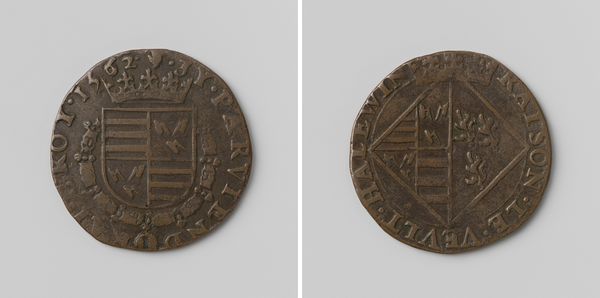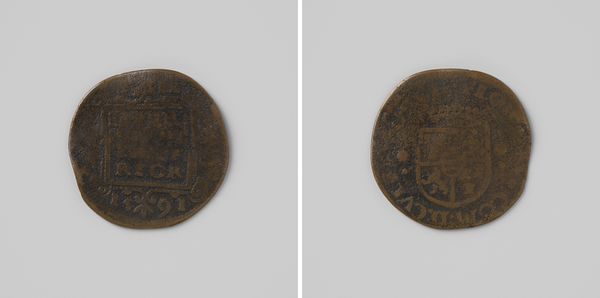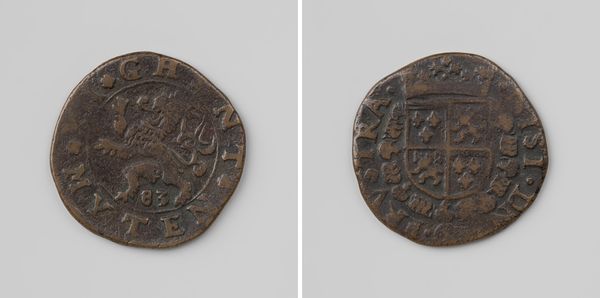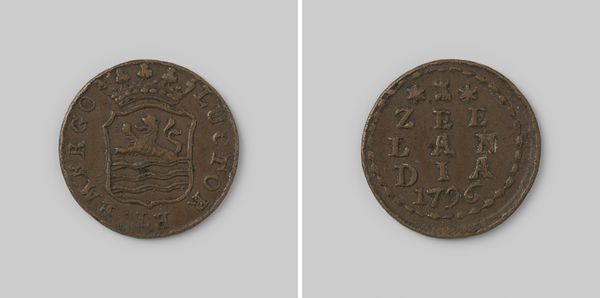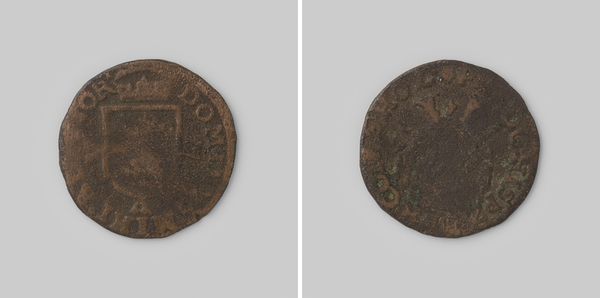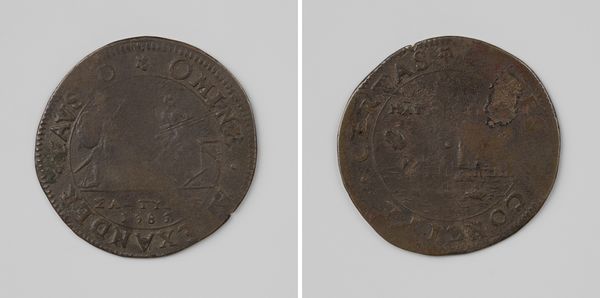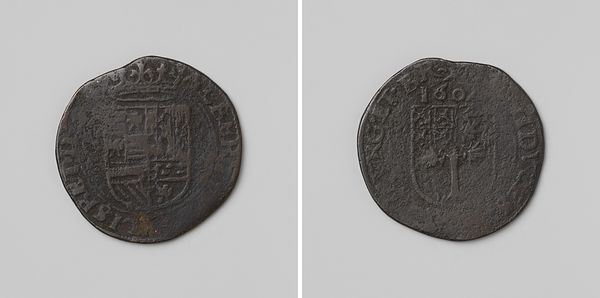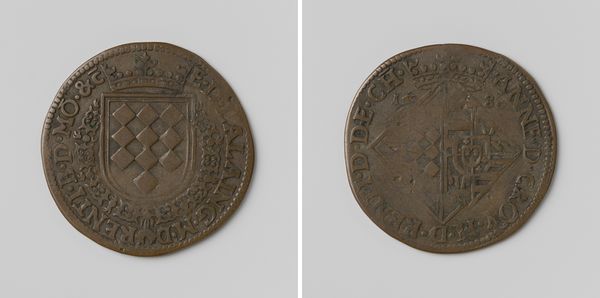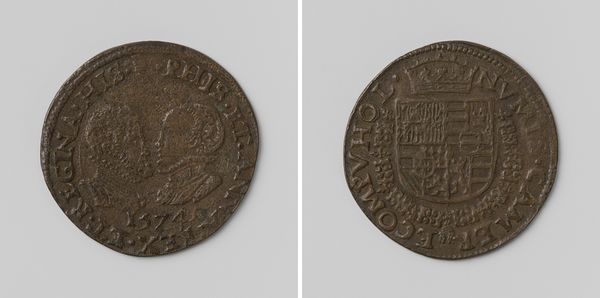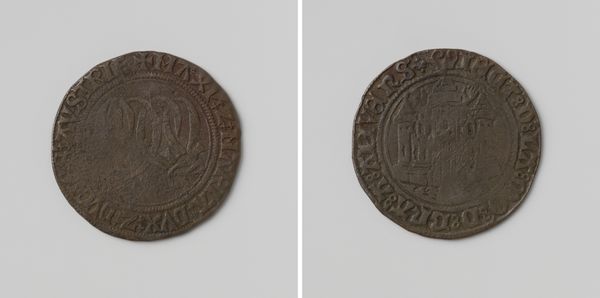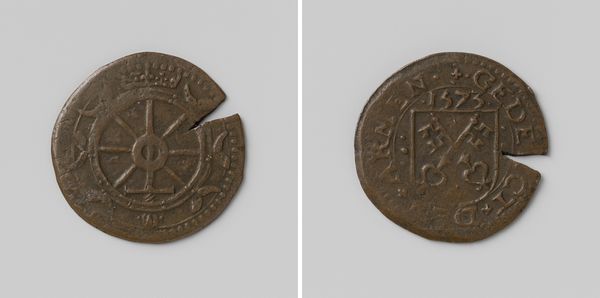
print, metal, engraving
#
baroque
# print
#
metal
#
ancient-mediterranean
#
engraving
Dimensions: diameter 2.1 cm, weight 2.65 gr
Copyright: Rijks Museum: Open Domain
Curator: Here we have a Roermondse duit, dating back to 1606. Editor: It looks well-worn. Gives me a tangible connection to the past, imagining the hands it has passed through. The imperfections in the shape—you just don’t get that with modern minting processes. Curator: Indeed. As a product of its time, this piece represents a significant part of Roermond's economic history. Coins such as these circulated within a very particular socio-political context, facilitating local trade. What were the systems of regulation and the patterns of imagery that these coins enforced, reflected, or subtly subverted? Editor: And if we're talking materiality, the choice of metal—likely copper or a copper alloy given its colour—speaks to availability and perceived value. What were the labor conditions in mines where the metal was extracted, or in the minting process itself? Were these skilled artisans, or something more like exploited labor? Curator: Good questions. Moreover, the engraving itself, even on such a small scale, reflects artistic styles of the period – glimpses of Baroque aesthetics scaled down for everyday utility and public dissemination. How was this artwork distributed in the society, what kind of social class used this coin daily? Editor: You can almost see the engraver’s hand at work! To me, the textures, created with the primitive technology, tell a silent story about how it was made and who participated in it. How would common folk use such an artwork—it's both a currency and symbol in one. Curator: Absolutely. Coins served a vital public function, standardizing exchange within the region, contributing to a sense of shared identity and stability. Think about this small coin like an propaganda, what this object represents in social values. Editor: Thinking about this artwork through its material qualities alongside its place in economic life does, indeed, bring its past a little closer. Curator: Exactly. Analyzing through social and cultural history shows how museums, galleries, and sociopolitical forces shape the production and reception of this art and influence our understanding of it.
Comments
No comments
Be the first to comment and join the conversation on the ultimate creative platform.
